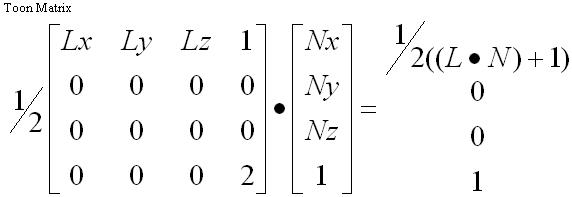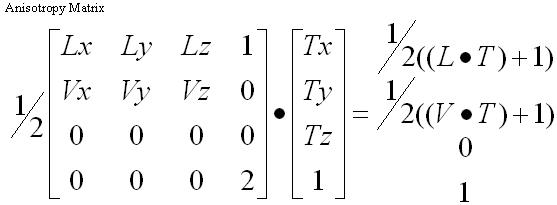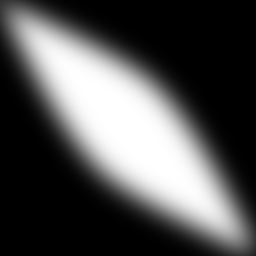
Using this texture...

See actual results
Some neat uses for Texture Matrices
(By Dan Evans, 10th Nov 1999)Please note; not all of these ideas have had solid testing via an implementation so some of it is theory, but not all of it.
The only real restriction on the coordinate space of these techniques is that if you want to use D3D's transformation pipeline (i.e. TnL) then you have to use world space coordinates for your vertex normals. This requires that the other vectors involved are also in the same coordinate space (otherwise the result would not make sense).
1) Cartoon rendering ('Toon' rendering)



This matrix uses the X and Y axes of the view matrix as vectors for using in a dot product
with the world space normal (the D3D sample "Spheremapping" uses the world space
normal which I found a bit confusing, but I guess that's how it works) The Z axis
of the view matrix is ignored. What we want is a 2d mapping into our reflection map
so Z turns out to be superfluous for our requirements. Using the D3D conventions the
X axis in view space can
be represented as a vector made from elements 11, 21, and 31 of the View matrix and
12, 22, 32 for the view-space Y axis;
| Viewspace X Axis (VX) | |||
| _11 | _12 | _13 | _14 |
| _21 | _22 | _23 | _24 |
| _31 | _32 | _33 | _34 |
| _41 | _42 | _43 | _44 |
| Viewspace Y Axis (VY) | |||
| _11 | _12 | _13 | _14 |
| _21 | _22 | _23 | _24 |
| _31 | _32 | _33 | _34 |
| _41 | _42 | _43 | _44 |

